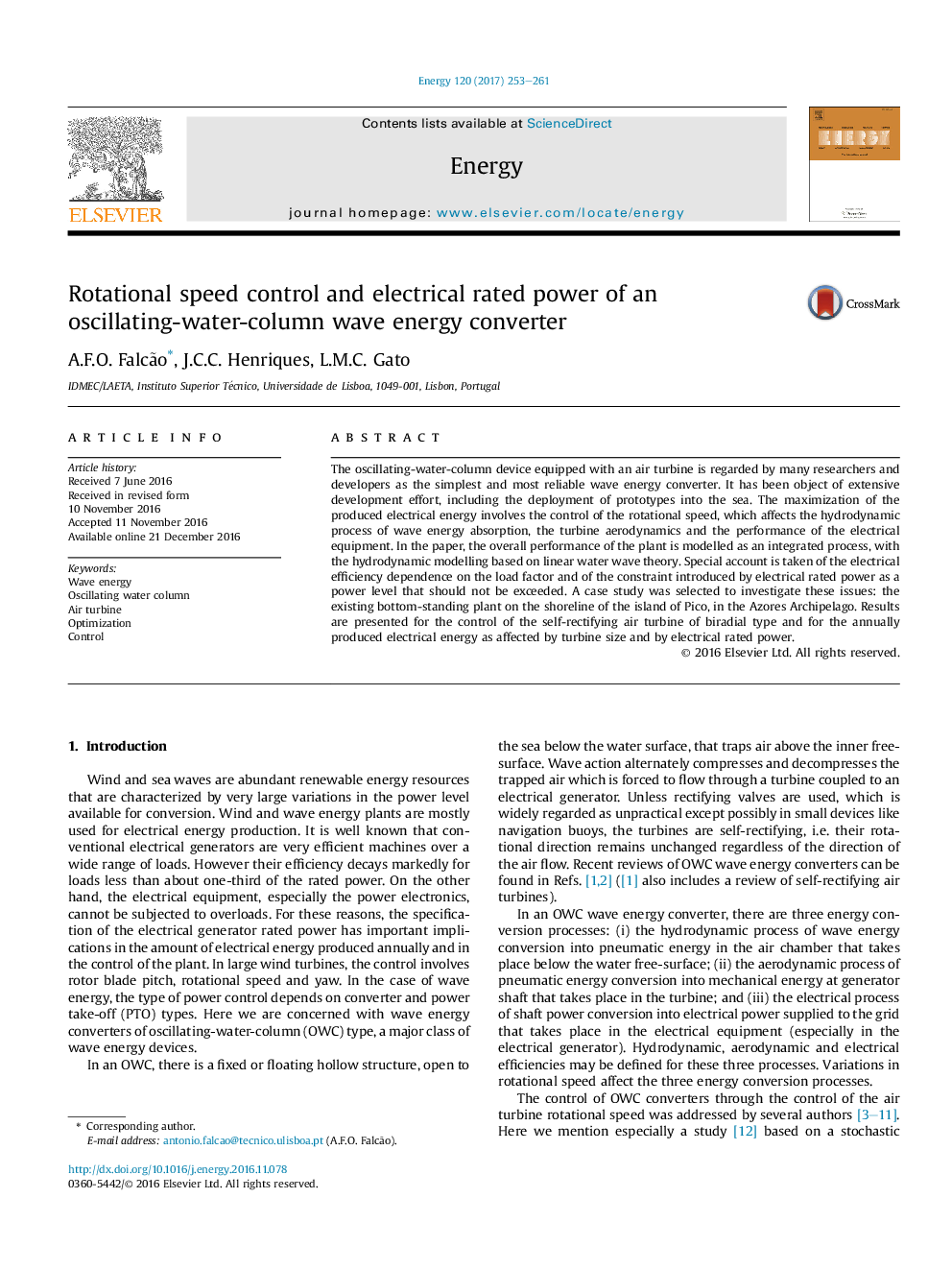ترجمه فارسی عنوان مقاله
کنترل سرعت چرخشی و قدرت الکتریکی قدرت مبدل انرژی موج ستون آب نوسان
عنوان انگلیسی
Rotational speed control and electrical rated power of an oscillating-water-column wave energy converter
| کد مقاله | سال انتشار | تعداد صفحات مقاله انگلیسی |
|---|---|---|
| 137557 | 2017 | 9 صفحه PDF |
منبع

Publisher : Elsevier - Science Direct (الزویر - ساینس دایرکت)
Journal : Energy, Volume 120, 1 February 2017, Pages 253-261
ترجمه کلمات کلیدی
انرژی موج، نوسان ستون آب توربین هوا، بهینه سازی، کنترل،
کلمات کلیدی انگلیسی
Wave energy; Oscillating water column; Air turbine; Optimization; Control;
ترجمه چکیده
دستگاه نوسان آب-ستون مجهز به توربین هوا توسط بسیاری از محققان و توسعه دهندگان به عنوان ساده ترین و قابل اعتماد ترین مبدل انرژی موج را در نظر گرفته است. این موضوع تلاش گسترده ای برای توسعه، از جمله استقرار نمونه های اولیه در دریا بوده است. حداکثر سازی انرژی الکتریکی تولید شده شامل کنترل سرعت چرخشی است که بر فرآیند هیدرودینامیکی جذب انرژی موج، آیرودینامیک توربین و عملکرد تجهیزات الکتریکی تاثیر می گذارد. در مقاله، عملکرد کلی کارخانه به عنوان یک فرایند یکپارچه، با مدل سازی هیدرودینامیکی بر اساس نظریه موج خطی آب طراحی شده است. توجه ویژه ای به وابستگی کارایی الکتریکی به عامل بار و محدودیتی است که توسط قدرت الکتریکی به عنوان یک سطح قدرت که نباید از آن تجاوز کرد، مورد توجه قرار گیرد. یک مطالعه موردی برای بررسی این مسائل انتخاب شد: بوته موجود در کنار ساحل جزیره پیکو در مجمع الجزایر. نتایج برای کنترل توربین هوای خود تصحیح نوع بیاندازه و برای سالانه انرژی الکتریکی تولید شده تحت تأثیر اندازه توربین و قدرت الکتریکی قرار می گیرد.

